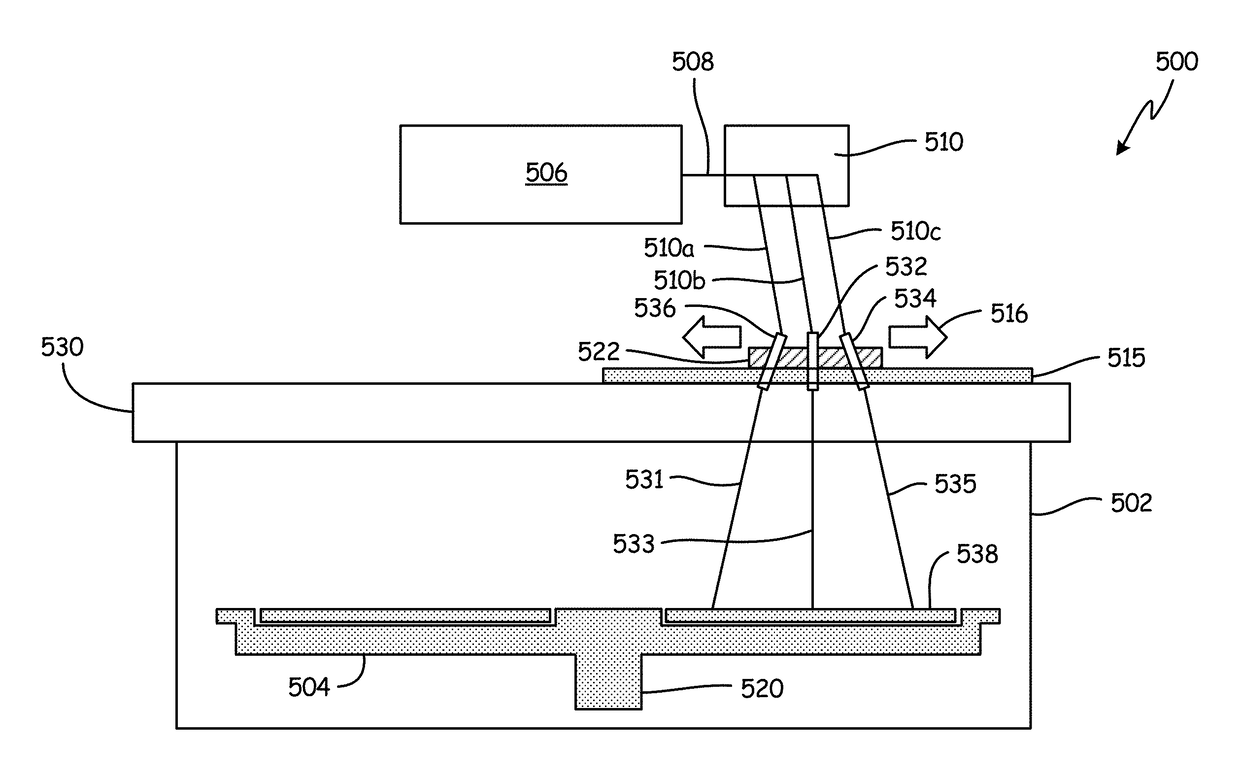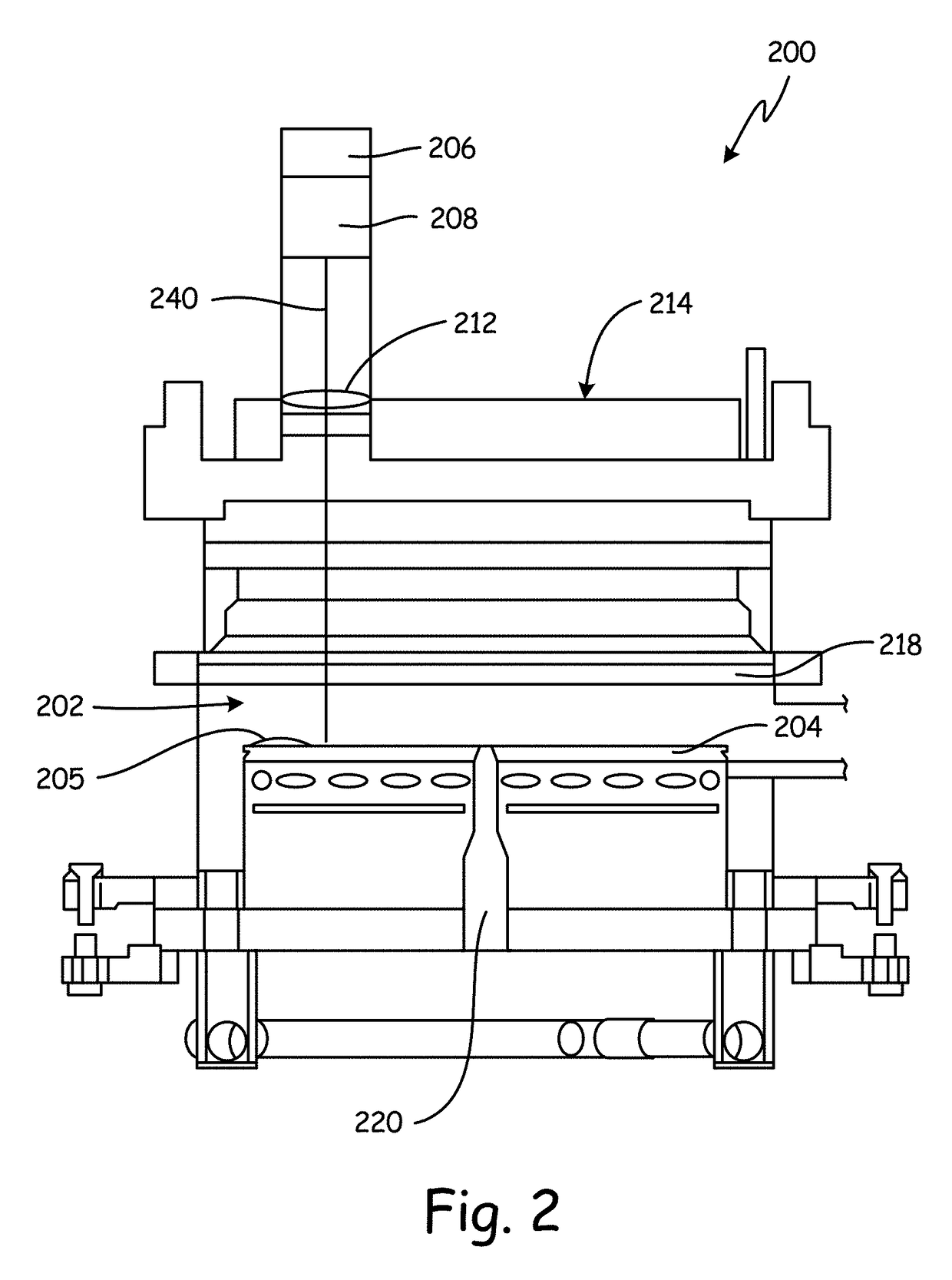Method and apparatus for controlled dopant incorporation and activation in a chemical vapor deposition system
a technology of chemical vapor deposition system and controlled dopant, which is applied in the direction of chemical vapor deposition coating, coating, semiconductor devices, etc., can solve the problems of inefficiency of post-growth annealing procedures, reduced overall electrically active dopant levels, and passivation or compensation of mg acceptor levels, so as to reduce the quantity of point defects
- Summary
- Abstract
- Description
- Claims
- Application Information
AI Technical Summary
Benefits of technology
Problems solved by technology
Method used
Image
Examples
Embodiment Construction
[0021]According to embodiments, a Metal Organic Chemical Vapor Deposition (MOCVD) system includes a chemical vapor deposition reactor having a window through which ultraviolet (UV) light can be routed. The UV light can be provided by a UV light source that is both tunable to different wavelengths, as well as capable of being aimed at specific portions of the interior of a chamber of the MOCVD system. For example, the UV light could be a mercury arc lamp, a mercury-xenon arc lamp, or a UV LED or LED array. In various embodiments, the UV lights are adapted to be tuned to a desired wavelength in the UV spectrum (typically about 180 nm to about 400 nm), and to be used to generate a beam of light that can be aimed at various parts of the semiconductor layer being grown in the MOCVD chamber in a raster pattern. The raster speed (defining the dwell time per illuminated area), UV light wavelength, and light intensity can each be modified to modulate the growth characteristics of the semicon...
PUM
| Property | Measurement | Unit |
|---|---|---|
| wavelength | aaaaa | aaaaa |
| pressure | aaaaa | aaaaa |
| pressure | aaaaa | aaaaa |
Abstract
Description
Claims
Application Information
 Login to View More
Login to View More - R&D
- Intellectual Property
- Life Sciences
- Materials
- Tech Scout
- Unparalleled Data Quality
- Higher Quality Content
- 60% Fewer Hallucinations
Browse by: Latest US Patents, China's latest patents, Technical Efficacy Thesaurus, Application Domain, Technology Topic, Popular Technical Reports.
© 2025 PatSnap. All rights reserved.Legal|Privacy policy|Modern Slavery Act Transparency Statement|Sitemap|About US| Contact US: help@patsnap.com



